UPSC Exam > UPSC Notes > Science & Technology for UPSC CSE > Indian Space Vision 2025
Indian Space Vision 2025 | Science & Technology for UPSC CSE PDF Download
Self-sufficiency, indigenisation, exclusive satellites, and our own GSLVs form the cornerstone of India’s space programme strategy, driving advancements in technology and global competitiveness.
Space Vision 2047
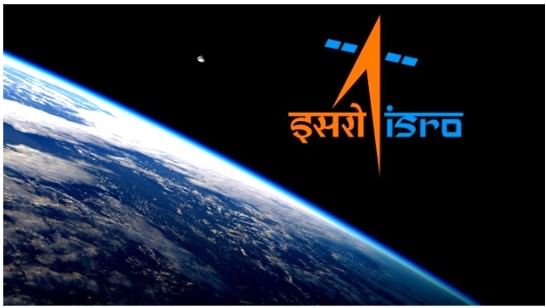
- The Space Vision 2025, unveiled at the Indian Science Congress in Bangalore in 2003, laid the foundation for India’s ambitious space goals.
- This vision has evolved into Space Vision 2047, reflecting India’s aspirations to become a global space leader by 2047.
- The updated vision emphasizes self-reliance in launch capabilities, ending dependence on foreign agencies, and achieving full indigenous satellite fabrication.
- Key objectives include establishing the Bharatiya Antariksha Station by 2035, landing an Indian astronaut on the Moon by 2040, and advancing lunar exploration through missions like Chandrayaan-4, planned for 2027-2028.
PSLV Modified
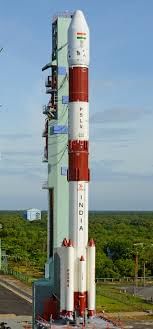
- The Polar Satellite Launch Vehicle (PSLV) was modified and successfully flight-tested in September 2002, launching METSAT, an exclusive meteorological satellite, into a geosynchronous transfer orbit (GTO).
- This marked PSLV-C4’s first mission to place a satellite weighing over 1,200 kg into GTO, expanding its capability beyond its original design for launching 900 kg Indian Remote Sensing Satellites (IRS) into a 900 km Sun Synchronous Orbit.
- By 2025, PSLV variants like PSLV-XL have launched advanced missions, including the Space Docking Experiment (SpaDeX) in January 2025, showcasing its continued reliability.
METSAT
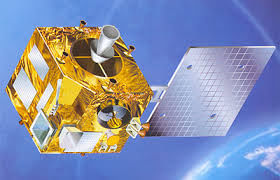
- METSAT, renamed Kalpana-1, was India’s first exclusive meteorological satellite, launched by ISRO in 2002.
- It served as a precursor to advanced INSAT systems, enabling separate satellites for meteorology, telecommunications, and broadcasting.
- This separation has allowed INSAT satellites, such as INSAT-3DS (launched 2024), to incorporate larger transponder capacities and enhanced power without meteorological instrument constraints, supporting weather forecasting and disaster management.
GSLV-Successful Test Flights
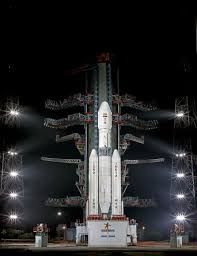
- The Geosynchronous Satellite Launch Vehicle (GSLV) has achieved multiple successful flights, including the landmark GSLV-F15 mission in January 2025, which launched the NVS-02 navigation satellite, marking ISRO’s 100th rocket launch.
- This mission strengthened India’s satellite navigation system, enhancing regional positioning and timing services critical for various sectors.
PSLV Commercialisation
- India’s PSLV (C-3) marked its entry into commercial space technology in October 2001, successfully placing India’s TES, Belgium’s PROBA, and Germany’s BIRD satellites into polar orbit.
- This milestone paved the way for India’s growing commercial launch capabilities.
- In 2025, PSLV continued its commercial success with missions like the launch of AST SpaceMobile satellites in March, reinforcing India’s position in the global space market.
INSAT-3A/3B/3C/3E in Orbit
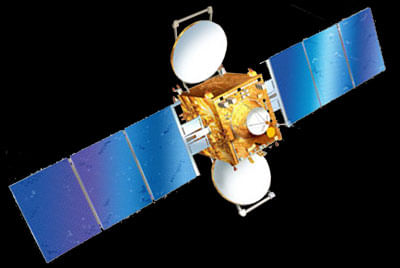
- The INSAT series has been succeeded by the GSAT series, with GSAT-30 launched in 2020 to provide advanced telecommunication services.
- In November 2024, GSAT-20 was launched via SpaceX’s Falcon 9, marking India’s first collaboration with SpaceX and delivering high-throughput Ka-band connectivity for broadband and in-flight services.
IRS
- The Indian Remote Sensing (IRS) satellite system, including IRS-1C, IRS-1D, IRS-P3, and IRS-P4, remains one of the largest globally.
- It provides critical data for:
- Agricultural crop forecasting
- Water resource management
- Forest surveys
- Wasteland mapping
- Fisheries
- Urban planning
- Environmental monitoring
- Recent additions like EOS-01 (2020) and the upcoming NASA-ISRO NISAR mission (June 2025) enhance India’s Earth observation capabilities.
PSLV-C-5 Launches IRS-P6
- In October 2003, PSLV-C5 successfully launched the Indian Remote Sensing Satellite IRS-P6, also known as Resourcesat-1, weighing over 1,360 kg.
- This was the first instance of PSLV placing a satellite exceeding 1,300 kg into orbit, demonstrating its enhanced payload capacity for remote sensing applications.
Advanced IRS
- India is actively developing advanced remote sensing satellites with cutting-edge features to support land and water resource management, large-scale mapping, and ocean and meteorological services.
- Notable advancements include Cartosat-3 (2019), offering high-resolution imaging for urban planning and infrastructure development.
- The upcoming NISAR mission for Earth observation.
Indigenous Cryogenic Engine
- The indigenous cryogenic engine became operational in 2014, positioning India as the sixth nation with full launch capabilities.
- By 2025, ISRO has advanced this technology with the CE20 engine for the LVM3, supporting heavier payloads and human spaceflight missions like Gaganyaan.
Telemedicine

- Telemedicine, leveraging satellite communication, has transformed healthcare access in remote areas.
- Initially launched with five VSAT terminals in Chamarajanagar, Kenchanaballi, Bangalore, Kolkata, Tripura, and Port Blair, the network has expanded significantly.
- By 2025, ISRO’s telemedicine program connects over 384 hospitals, linking 60 specialty hospitals with 306 remote facilities and 18 mobile units, delivering expert consultations to underserved regions.
EDUSAT
- Launched in 2004, EDUSAT, India’s first dedicated educational satellite, was designed to enhance literacy through formal and non-formal education.
- Contrary to earlier plans for a 2007-08 launch, EDUSAT has been operational since 2004, supporting distance learning.
- Current initiatives, like the Indian Institute of Remote Sensing’s outreach programs, use satellite technology to deliver courses on remote sensing and GIS to educational institutions nationwide.
MEGHA-TROPIQUES
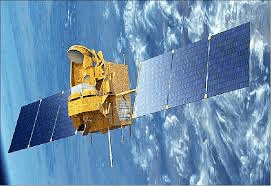
- Megha-Tropiques, a joint mission between ISRO and France’s CNES, studied the tropical atmosphere and climate.
- Launched by PSLV-C18 on October 12, 2011, it operated for over a decade, far exceeding its three-year mission plan.
- The mission ended in April 2022 due to attitude control issues, and the satellite was deorbited on March 7, 2023, marking a successful conclusion.
Artificial Limb
- The Vikram Sarabhai Space Centre developed a lightweight, durable polyurethane foot, surpassing the traditional Jaipur leg.
- Extensively tested at the Government Medical College, Thiruvananthapuram, it incorporates amputee feedback for improvements.
- In 2022, ISRO introduced microprocessor-controlled knees (MPKs), enhancing mobility for above-knee amputees.
- This technology, derived from rocket motor composites, was transferred free to the Bhagwan Mahavir Vikalang Sahayata Samiti in Jaipur for mass production.
Space System for Rural Development
- The Swarn Jayanti Vidya Vikash Antariksh Upagraha Yojna (Vidya Vahini), launched in May 2000 using INSAT-3B, supports rural development in the Kalahandi-Bolangir-Koraput region of Odisha.
- It provides education, information, and training to remote areas.
- By 2025, satellite-based services have expanded, offering agricultural advisories and disaster management support to rural communities nationwide.
Space Programmes for North-East
- The North-Eastern Space Applications Centre (NESAC), established in Shillong in December 2000, promotes space technology for the North-East.
- It focuses on natural resource management, developmental communication, and space science research.
- In 2021, NESAC launched the North Eastern Spatial Data Repository (NeSDR), enhancing regional planning and resource utilization.
Scientific Campaign
- ISRO’s scientific campaign, initiated with 40 Rohini sounding rockets, studies atmospheric gravity waves using high-altitude balloons from Sriharikota and low-altitude balloons from Thiruvananthapuram.
- Recent efforts include the Aditya-L1 solar observatory (2024) and the Proba-3 mission (2024), advancing India’s space science research capabilities.
Mission to Moon
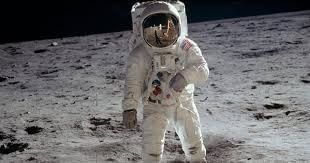
ISRO has conducted multiple unmanned lunar missions.
- Chandrayaan-1, launched on October 22, 2008, marked India’s first lunar exploration.
- Chandrayaan-2, launched on July 22, 2019, included an orbiter, lander, and rover.
- Chandrayaan-3, launched on July 14, 2023, successfully landed a rover near the lunar south pole.
- Chandrayaan-4, planned for 2027-2028, aims to collect and return lunar samples, building on prior successes.
Satellite-based Navigation
- The GPS-Aided Geo Augmented Navigation (GAGAN) system, operational since 2013, supports air traffic management in Indian airspace.
- Developed by ISRO and the Airports Authority of India, GAGAN enhances navigation accuracy and safety.
- By 2025, it has been fully integrated into aviation operations, with ongoing upgrades to support a consolidated satellite-based communication, navigation, and surveillance system.
Gaganyaan: Human Spaceflight Programme
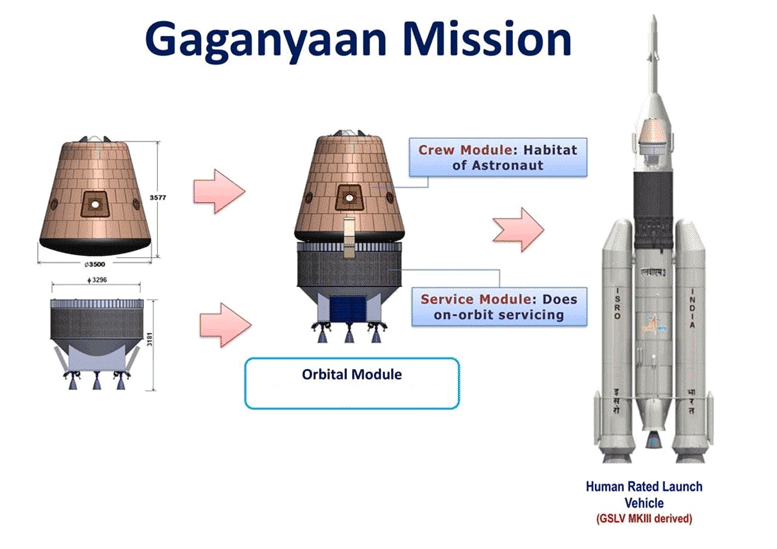
- Gaganyaan, India’s first human spaceflight programme, aims to send three astronauts to low-Earth orbit for three days by 2026.
- Uncrewed test flights are scheduled for Q1 and Q2 2025, with four trained astronauts, including Group Captain Prasanth Balakrishnan Nair, preparing for the mission.
- This programme marks a significant milestone in India’s space ambitions, showcasing its technological prowess.
Indian Space Policy 2023 and Commercial Growth
- The Indian Space Policy 2023 has redefined India’s space ecosystem by promoting private sector participation through IN-SPACe and NSIL.
- It focuses on commercializing space activities and fostering innovation.
- By 2025, over 150 space startups are active, and ISRO’s commercial launches, such as AST SpaceMobile in March 2025, highlight India’s growing role in the global space economy.
The document Indian Space Vision 2025 | Science & Technology for UPSC CSE is a part of the UPSC Course Science & Technology for UPSC CSE.
All you need of UPSC at this link: UPSC
|
91 videos|517 docs|212 tests
|
Related Searches






















